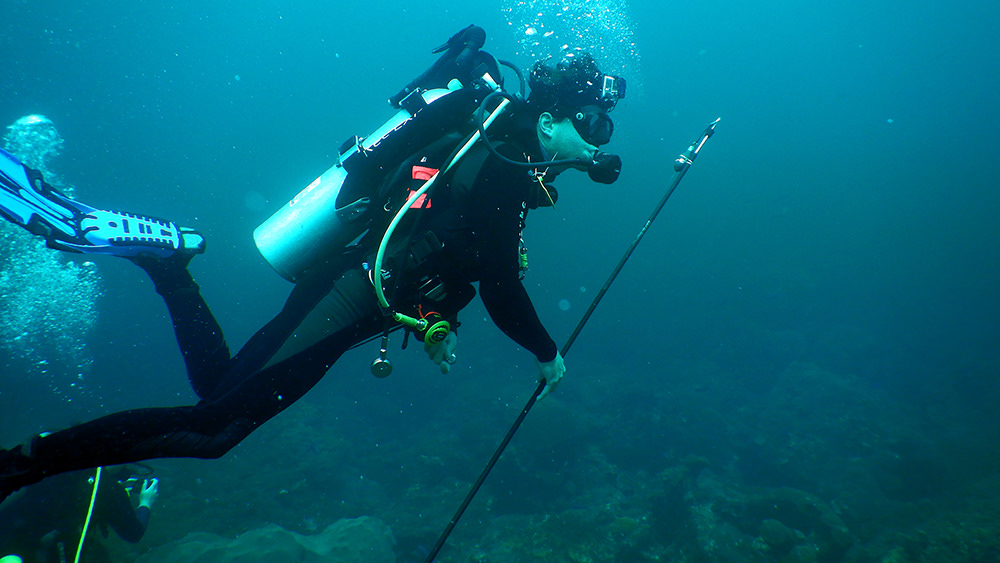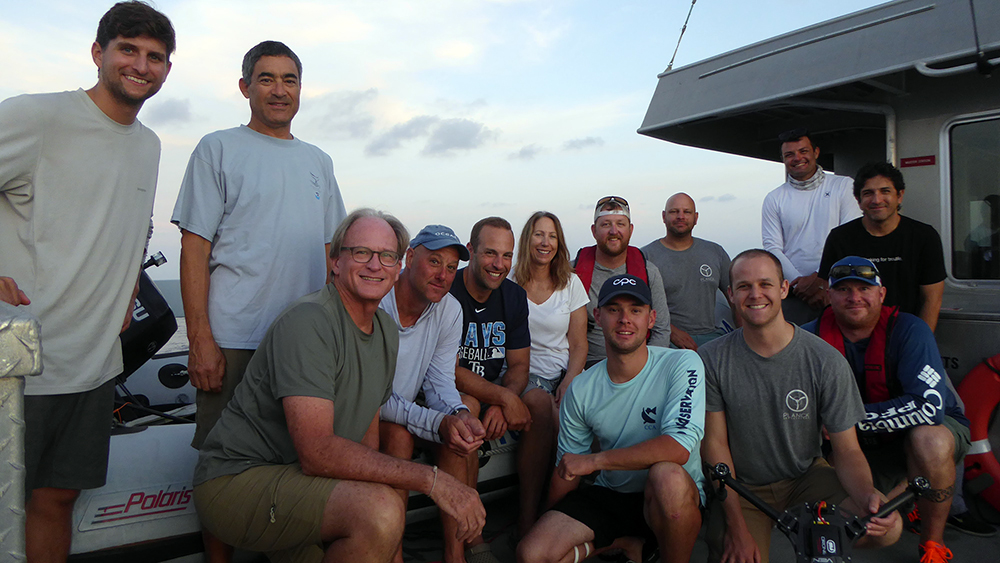
Flower Garden Banks National Marine Sanctuary (FGBNMS) has teamed up with Dr. Nick Farmer (NOAA Protected Resources Division), Dr. Josh Stewart (Manta Trust, former Nancy Foster Scholar, and SCRIPPS Institution of Oceanography graduate student), and the National Marine Sanctuary Foundation to deploy satellite tags on manta rays in Flower Garden Banks National Marine Sanctuary. Josh Stewart is also collecting biopsy samples from manta rays to do genetic sequencing and conduct stable isotope analysis to study the feeding ecology of these animals.
In August 2019, scientists conducted a 3-day dedicated manta ray research cruise in FGBNMS. Divers conducted 21 scuba dives surveying for the mantas. In addition to scuba operations, an Unmanned Aircraft System (UAS, i.e. drone) was flown over the sanctuary to assist with locating manta rays from the air.
Two manta rays were observed during the underwater surveys and researchers successfully attached a Wildlife Computers MiniPAT satellite tag to a 6.5 ft (2 m) disc-width juvenile female at West Flower Garden Bank. The tag was programmed to stay on for six months. Unfortunately it came off after about a week, but provided extremely high resolution diving data along with horizontal movements. A second dedicated manta ray tagging cruise will be conducted during the 2020 field season.
In 2018, the giant manta ray was listed under the Endangered Species Act. Scientists and managers are hopeful that the information provided by continued tagging efforts and tissue sampling can be used to guide species recovery.
This project is a collaboration with the National Marine Fisheries Service (NMFS) Southeast Regional Office (SERO), NMFS Southeast Fisheries Science Center (SEFSC), Office of National Marine Sanctuaries, FGBNMS, Channel Islands National Marine Sanctuary, Planck Aerosystems, Texas A&M University Galveston, NOAA divers, Manta Trust, and the National Marine Sanctuary Foundation.

Sanctuary as Nursery Habitat
Studies have already shown that Flower Garden Banks National Marine Sanctuary, and surrounding banks, may serve as nursery habitat for manta rays.
In the late 1990s and early 2000s, Jeff Childs (Texas A&M graduate student) suggested in his Master’s thesis (Childs 2001) and related reports (Childs et al. 1996; Childs 2000) that the Flower Garden Banks region may serve as a nursery habitat for manta rays. He concluded this after documenting the high proportion of juvenile mantas on the banks.
In 2018, Stewart et al. (and a subsequent correction) confirmed the preponderance of juvenile manta rays. They also used size distribution data of mantas at FGBNMS and presented evidence of site use by almost exclusively juvenile manta rays, based on clasper development. They compiled over 25 years of sighting data to evaluate the habitat use and temporal visitation of mantas at FGBNMS against three established criteria used to classify elasmobranch nursery areas as described in Heupel et al. 2007.
Stuart et al. 2018 further emphasized the importance of this region to future research on juvenile mantas and the need for regional conservation of these species.
For more information, contact flowergarden@noaa.gov.

